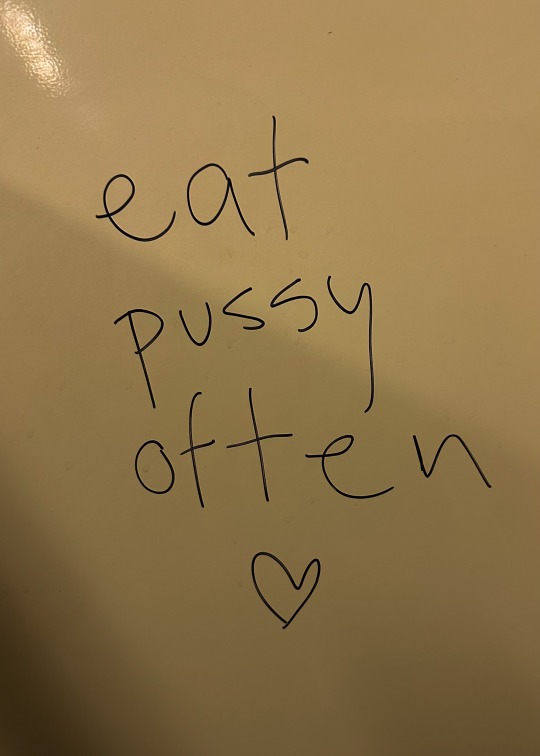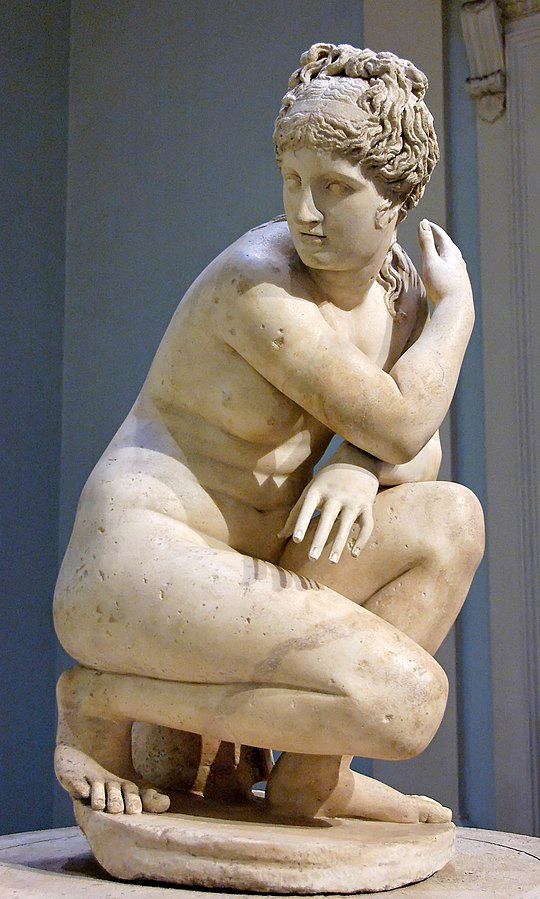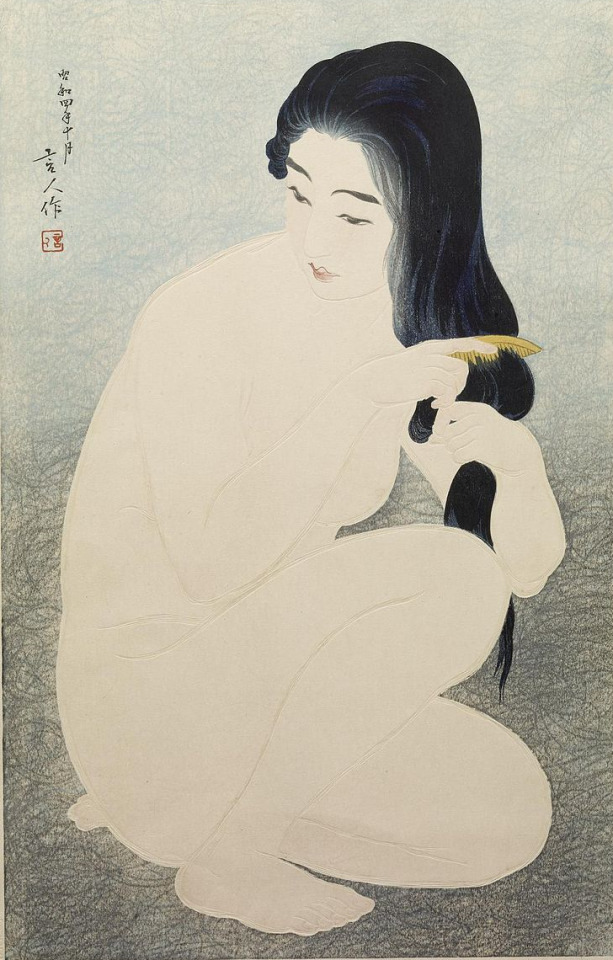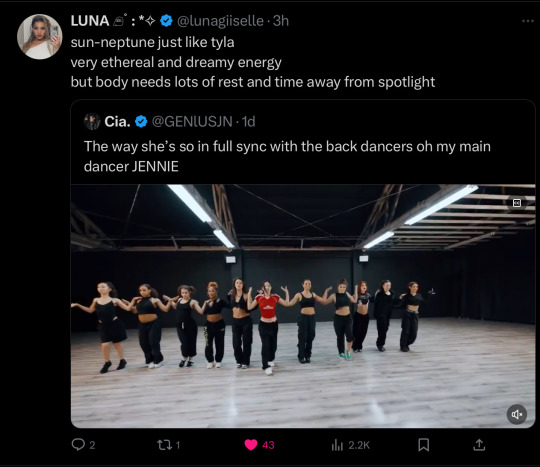#Women in Venus
Explore tagged Tumblr posts
Text

#Venus#Women in Venus#Black Venus#Swimwear#Women in swimwear#Black swimwear#Red swimwear#One piece swimsuit#Women in one piece swimsuits#Black one piece swimsuit#Red one piece swimsuit#Tattoos#Women with tattoos#Hair#Female
8 notes
·
View notes
Text

#Venus#Women in Venus#Black Venus#Red Venus#Swimwear#Women in swimwear#Black swimwear#Red swimwear#One piece swimsuit#Women in one piece swimsuit#Black one piece swimsuit#Red one piece swimsuit#Tattoos#Women with tattoos#Hair#Female
6 notes
·
View notes
Text



5K notes
·
View notes
Text



Birth of Venus 🩵✨
One of the rare instances a school assignment actually turns out good
#birth of venus#illustration#digital art#idk what tumblrs policy on bush is#I LOVE WOMEN‼️‼️‼️#my art#my post#original art#aphrodite#greek mythology#roman mythology#classical art#svanyc
4K notes
·
View notes
Text

#heard#in the music festival venue’s bathroom stall#(in the women’s room fyi)#(this was a sapphic post)#mine#bangers
10K notes
·
View notes
Text
How women influenced by different planets act in one-on-one relationships
Platonic, familial and/or romantic. Based on my own observations and traditional associations💕 planetary influence is present when a native has one or more nakshatras ruled by that planet in their big three(moon, ascendant, sun). If that or any other planet is conjunct sun, moon or ascendant in the chart, then it also adds its influence, but to a much lesser degree. I'd advise to read for your moon, but as always, use discernment and and do not take this information at face value.
Sun women
Krittika, Uttara Phalguni, Uttara Ashadha
The women ruled by the Sun are often seen as confident, self-possesed, bright, expressive and measured.
The Sun is well-known to be a masculine planet, that does not make sun-ruled women any less worthy in their femininity.
Sun women might be surrounded by a lot of male energy in younger years. It could have been positive or negative but all in all, they're familiar and quite comfortable with it. I don't mean they were plagued by admirers, I moreso mean they had a father figure, uncles, brothers/male cousins(usually older), male friends around them. I might be wrong but I've seen this so much in real life and in art. If that's not the case, then they can fit in and hold their own in a group of men. It's true that they're not phased by trying to be more masculine themselves(like jupiter women do sometimes) or to completely lean into traditional femininity(like moon women). They usually get love and support from men that have doubted them at first.
That leaves sun girls with an abundance of masculine energy absorbed in themselves. In one-on-one relationships they enjoy a level of independence but they value loyalty immensely. They build relationships on certain rules that come from their personal values. They look for a partner in crime and an understanding confidante more than anything else.
That's why saturn-ruled people are best for them, along with other sun-ruled individuals. Ruled by the planet of dedication and longevity, Saturn dominants understand their detachment and fixed nature, and provide the cold, hard structure for their self-expression.
Their energy is not for abuse though. They are more vulnerable and sensitive than most realize. As they are women influenced by a very masculine planet, they might feel like they're giving too much sometimes, like they're being taken for granted. As Saturn is the planet that never takes anything for granted and works for its rewards, it is not going to discard Sun's warm and "life-giving" nature. Moreover, it is going to appreciate it, respect it and try to keep up with it as best as it can. Saturn's cool and careful nature is soothing to Sun women, making them feel safe to lean into their individuality with more confidence while prividing the essential balance for a full existence.
Moon women
Rohini, Hasta, Shravana
Moon women have a simplicity about them. Traditionally a feminine planet, moon is considered to be a soft, smooth and nurturing influence.
Moon women are easy to recognize. Moon is probably the most dependant planet. They are passive in their demeanor and easily absorb influence. They often have a group of people around them, if not a group, then at least or not two, just because. That can be explained by moon's receptive but also giving nature, that gives back the smoothed, mixed essence of what it has recieved that is easily digestible. But they don't have that energy within them. They can be very accomodating while not initiating anything at all. If they do initiate, it's something similar to what the other person has initiated.
So moon thrives on dependancy. They might enjoy groups, because that way their passivity and receptivity is not held against them, and they might feel like they contribute more that way. In one-on-one relationships, they are very easy and simple, but might become stressed and on edge. Moon rules masses and the subconcious, so they need an energetically abundant planet that does not mind being drained.
Moon is, in its essence, is vampiric, so they like Sun people. They might be quite comfortable around Jupiter people, and sometimes, with Venus people(the Shravana- Purva Ashadha pairing works particularly well).
Mercury women
Ashlesha, Jyeshta, Revati
Mercury is the planet of integration and manipulation, and women ruled by it are often multi-faceted, containing the potential for adapting and the willingness to to often do so.
Mercury can be described as the "hermaphrodite" sometimes, especially Revati nakshatra. Due to this highly analytical and adaptible nature, mercury women have the ability to morph themselves into different roles, depending on who they are interacting with. Their feminine energy is based on receiving and then skillfully using whatever is given to it. Mercury is the planet that is quite different in all three of its nakshatra stages. Ashlesha, Jyeshta and Revati all have different feminine qualities, due to the three stages that they wrap up being different from each other. Venus nakshatras are different from each other too, but to a lesser degree. What all mercury nakshatras do have in common is sensitivity and skill. They change and adapt to various envirmonments, and their resourcefulness is seemingly limitless.
In one-on-one relationships they need people who can handle that "manipulative" and "nervous" nature. All yoni consorts of mercury nakshatras(Punarvasu, Anuradha, Bharani) have a theme of passivity, they all want and need that "manipulative" energy. Similarly, Mercury women themselves can thrive with people who are energetically stable/abundant but want to move and adapt. Since Mercury women have a need for stimulation and variety, they maintain relationships with people who they don't find boring AND can provide loyalty. There is no single planetary energy that is generally compatible with Mercury people, but Venus and Mercury are traditionally friends, and Venus also heals Mercury. The best example of this is Revati and Bharani(elephant yonis), but other combinations can be compatible too(except Ashlesha and Purva Phalguni, due to them being enemy yonis).
Venus women
Bharani, Purva Phalguni, Purva Ashadha
Venus_ the planet of beauty, sensuality and love is a well-known feminine force that is almost synonymous with the word.
Venus women are, before anything, choosy and exclusive. Their taste is very specific and particular, and whatever is "theirs", is theirs completely. Despite the outward serenity and composure, their internal nature is very fierce and even ruthless. That discriminating nature extends to everything in their life, where they have to be clear about the dividing lines of everything that they deem worthy, and everything else that they don't. There is also an inner drive to attain what they want/need/desire/love.
Their views on one-on-one relationships are unique, and they have very high standards, along with an attentive and giving nature. A lot of those relationships might have left them dissapointed. They seek a balanced give and take in any 1-1 bond. They might even blame themselves for not choosing correctly, since they're already very careful. They mainly want loyalty and support. As always, those relationships have to fulfill their personal desires. Someone considerate, attentive, and skilled is best for them.
There is no single planet type that will fulfill all three Venus nakshatras and most of their natives, but generally, Mercury people have what it takes to impress and keep them. They share a discriminating nature, but while Venus women are energetically abundant, loving and often passive(on 1-1), Mercury is actively "manipulative" and morphing into whatever Venus desires. The best version of this is Bharani and Revati(elephant yonis). Purva Phalguni feels best with Magha(rat yonis) and most likely will not get along with Mercurial Ashlesha(enemy cat yoni). Purva Ashadha is best with Shravana(vanar yonis). All Venusian lunar mansions are best with their uniquely preffered nakshatras. Besides them, they might form friendships with Ketu, Sun, Jupiter or Saturn nakshatras (with the exlusion of Purva Ashadha- Krittika/Pushya, Bharani-P.Bhadrapada and Purva Phalguni-Punarvasu pairs).
Mars women
Mrigashira, Chitra, Dhanishta
Mars_ the warrior planet that grants protection has been a symbol of masculinity since ancient times. That coorelation, although undeniable, does not exactly encompass the whole essence of that force, especially while considering women influenced by it.
Mars rules the energetic output_ how we spend our energy and life force. In many ways, Mars women, being the passive/feminine vessels for that triggering energy, are expressive and engaging. But unlike Mercury, that expression is geared towards the physical body. Unlike Venus, they do not have any inner discriminatory preferences that might make them that choosy. Their expression is very outward and shown on the surface, so while they can be confrontational or agitating with how they behave, they do it for protection, because that it their only mechanism of doing so.
Their heated but inwardly quite gentle nature can make them susceptible to unnecessary drainage. That's why they're another planet type that needs a giving person in 1-1 relationships. With them, that person has to not only give, but have a true consideration of their sensitivity.
Jupiter people are famously best for these women. Jupiter natives can give their excess energy to them and ensure that their vulnerabilities are not abused. The two latter Mars nakshatras both have Jupiter nakshatras as yoni consorts and Mrigashira's yoni consort is Rohini_ a fixed but soft-natured nakshatra.
Jupiter women
Punarvasu, Vishakha, Purva Bhadrapada
Women ruled by the great benefic, the planet of greatness, plenty and godhood can be big personalities. Jupiter has seemingly infinite energy that wants to give without end, and often, they do.
Jupiter women have a very enthusiastic, almost aggressive niceness about them. They might have been surrounded and influenced by male energy since their early life like Sun women, but their true feminine power comes from being open while giving and receiving, especially when around individuals who they think need their "help" the most.
Jupiter women are the one planet type that feel the best in groups, even moreso than lunar women, and unlike them, since Jupiter wants to give to all, they might feel very uncomfortable in 1-1 relationships. That being said, they're not exactly opposed to the idea of it.
They will feel best with heated and draining planets, especially Mars. Mars can take Jupiter's abundant energy and use it to build and protect. They're famously a good pair, but other planet types can be just as compatible with Jupiter. Ketu people also have a desire to take Jupiter's energy but unlike Mars, they won't drain it to use it outwardly, instead, they'll absorb the energy completely and integrate it into their spiritual essence. The exception would be Punarvasu(Cat yoni) and Magha(Rat yoni), because of enmity between yoni animals.
Besides them, Punarvasu nakshatra in particular will get along with Ashleshas, a Mercury nakshatra, due to them being yoni consorts (cat yonis).
Saturn women
Pushya, Anuradha, Uttara Bhadrapada
The cold planet of control and restraint is a passive but tough and unbreakable force. Saturn women find their femininity in stillness and silent, but resilient passivity.
Their strength is tested and it gains more layers through time. This kind of energy might become impossible to intimidate, so many might feel that Saturn women are never phased by life in general. More reactive or moldable people might distance themselves from them, even though on paper Saturn women are easy to like.
They find too much flux and chaos unbearable. Saturn's femininity is all about limiting and crystalizing whatever it receives, so the more stable that energy, the better Saturn women might manage in binding it, even though they can restrain and control any type of energy, no matter how messy.
Saturn ruled women might have dealt with a harsh, limiting, authoritative feminine energy in their younger years. They have learned how to manage themselves in various complicated situations. What they seek in 1-1 relationships is trust and loyalty, not too unlike Sun women. Saturn people are best with Sun people. Sun's warm influence will give their structure a heart and a "purpose". Sun is the planet that seeks out the cold, restraining influence of Saturn that matches its own stability and self-possession.
Since these women are the feminine variation of Saturnian energy, they might be extremely passive and unwilling to start anything themselves, but after they have something to hold onto, they can become actively bossy.
The similarly cold but also adaptable and changeable nature of Mercury might also be an easy and natural match for Saturn women. This pairing might be best in platonic or familial relationships, but the Anuradha-Jyeshta pair(rabbit yonis) is perfect in romantic couples too.
Rahu women
Ardra, Swati, Shatabhisha.
The north node of the moon, the dragon's/serpent's head is a shadow planet and only one half of the opposition that makes up the destiny of a person. The nodes are dependant on each other, and both of them are dependant on the moon. Even this fact gives them a very different kind of quality and essence. So, women ruled by them are a distinctive and very draining group of force.
Rahu women are the personifications of the illusion. For them it is easy to see and identify, to box and to define and label. They are adaptable, responsive, cerebral. There is a certain numb neutrality about them. They are very aware of and immersed in the material world. They can often become bored or overwhelmed by it. It is not unknown that Rahu ruled individuals might be prone to nervousness and anxiety.
Rahu women are easily susceptible to all kinds of influences, just because they absorb and then project everything around them. They can adopt behaviors from other people without noticing, but unlike Moon women(who also do this) they do not give anything back to anyone in particular, they just take it into their illusion and show it to everyone.
That is why they can be quite comfortable within groups. With personal, 1-1 relationships, difficulties can arise. They need a very particular kind of person that can handle their tense and sometimes chaotic nature and can direct their "hyper" essence towards something stable.
Ketu is the other half of Rahu and the only planet that can calm it down. The immovable and hot nature of its opposite shadow planet can help Rahu get out of the head stop its often actively paranoid behavior. Ketu can provide the spiritual substance for Rahu's material manifestations and can match its cold, active and outwardly discharging energy with its own heated, passive and absorbing essence. Obviously, the two pairs of them are yoni consorts, with Ardra(dog yoni) and Shatabhisha(Horse yoni) having Mula and Ashwini as yoni consorts, respectively. Swati can also easily get along with Ketu people, but Ashwini(enemy yoni) might be the exception. For Swati, the best match is its own yoni consort(buffalo yoni)_ Hasta, a very earthy nakshatra.
Besides Ketu, Rahu people can be very drawn to Sun people. Mythologically, Rahu always seeks to eclipse the Sun_ another discharging and active planet, the one that it wants to imitate. If, for example, a Rahu person also has a Ketu influence, due to already having that Rahu-Ketu balance, they might prefer Sun individuals who emanate that warm light from within themselves. In platonic relationships, Rahu people might find kinship with Jupiter individuals with whom they share an adaptible and "airy" nature, but can give their abundant energy to draining and discharing Rahu.
Ketu women
Ashwini, Magha, Mula
The other half of the dragon, the tail/body of the serpent, the absorbing shadow that rules over the past of the person. Also a shadow planet that drains and depletes, Ketu is the "conquerer" that establishes the very essence of a person or a thing. It is where an individual can find their true power, but also where there is a potential for great danger.
Ketu women are a very raw example of femininity. Their basic nature and behavior is the representation of femininity in possibly its simplest light. They absorb everything around them and instead of doing anything at all, they integrate it into their internal selves. Their power is their passivity. Their energy resembles a black hole_ a seemingly endless void that never seems to be satisfied.
They too have a numbness in them, but unlike Rahu, Ketu women might become overwhelmed with their own stagnant and heavy energy, struggling to properly express or define what they are, feel and know. Rahu can become confused from too much information, Ketu can become confused from a lack of it. In the end, they both might feel like they are missing whatever the other is/has. There is also a blindness to both of them, where each sees only their opposite side. But Ketu knows what it knows, and unlike Rahu, it does have stability. The danger with them is stubbornness, the inability to be moved by the outside.
Ultimately, Rahu people are the best match for them. Ketu women can be overly passive* and unresponsive in most 1-1 relationships. They can "hide" and assimilate better in groups but with just one another person they can become extremely disinterested, if the other is not on par with them. Rahu can break its stagnancy and help Ketu women to push their energy outwards.
Besides Rahu individuals, Ketu women might be compatible with Jupiter people, since they have an abundance of excess energy that can give to Ketu's hungry and absorbing nature. Ketu also heals Jupiter. Another dynamic that is possibly compatible for them is with Mars-ruled individuals, due to Mars and Ketu being similar in nature, but this might work best in platonic relationships.
*the passivity of Ketu is not displayed in an obvious way, at least, not all the time. By passivity I meant that it's very hard for them look outside of what they know and have decided. Their behavior might actually look very expressive and reactive, especially Ashwini's and Mula's. Ketu is the conqueror because it simply goes and acts without thinking. It's pure instinct. What it lacks though is the rational mind and awareness. In real life natives, this can manifest as willful or unintentional "ignorance", or simply intense self-focus that does not really allow outside input. With Ashwini, getting their way is a matter of protection, existence and survival, and their "ignorance" is the most unintentional out of all Ketu nakshatras. With Magha, it's about their sense of self-worth and influence. With Mula, it's about their core beliefs and an establishment of the ultimate truth. I think Ashwinis are mostly unintentional, Maghas don't even care to even look at that, and Mulas are aware of their "ignorance" but recognize the necessity of self-focus for their own basic sanity.
#vedic astrology observations#vedic tumblr#vedic#vedic astro observations#vedic astrology#vedic astro notes#vedic chart#astrology#planets#sun#moon#venus#mercury#mars#saturn#jupiter#rahu#ketu#nakshatras#sidereal astrology#astrology tumblr#astrology observations#astroblr#astrology blog#venusian women
1K notes
·
View notes
Text

#sailor moon#bishojo senshi sailor moon#pretty guardian sailor moon#meme#sailor moon memes#code name sailor v#sailor v#minako aino#sailor venus#artemis#dj crazy times#planet of the bass#every European dance song in the 1990’s#women are my favorite guy#edit
12K notes
·
View notes
Photo


The Crouching Venus (Lely version) - Doidalses of Bithynia, third century BC // Combing Her Hair - Torii Kotondo, 1929
#art#art parallels#art comparisons#classical art#art comparatives#women in art#sculptures#ukiyoe#ukiyo-e#venus#torii kotondo#female beauty in art#female beauty#hulderposts#art comparison#statues#my posts
16K notes
·
View notes
Text
Girl's girl energy:
Astrology Observations Part - 5:

Aries moon : natals with this aspect are courageous and independent.. they r the kind of friends that push their lady friends to do better. They r also such amazing cheerleaders. Very supportive friends.
Venus - Mars (Positive Aspects) : these natals attract social butterflies and popular people. These natals don't shy away from showing their both masculine and feminine energies.. hence they attract a lot of healthy friendships in their lifetime.
Sagittarius moon : these natals are optimistic, intellectual, fiery spirited and adventurous... These girls have a golden retriever energy. Such a delightful bunch. These girls make their girlfriends smile.
Venus - Jupiter (other than opposition): they have a big heart. These natals spoil their friends. They love their friends wholeheartedly.. they r so loyal to their friends even when they turn their back on these natals.
Aries stellium : these natals r incredibly masculine than other women... They r honest and give constructive criticism that will help their friends grow.
Moon - Mars : natals with this aspect have a healthy mix of both extreme masculine and extreme feminine energies.. it usually gives the natal a healthy emotional regulation. These natals both men and women make amazing friends.. for everyone.
#astrology observation#astrology observations#natal astrology#vedic astrology#astrologer#astrology#astrology signs#astro observations#astrology community#astrology tumblr#astro community#astro notes#astro chart#astro placements#astro posts#astro tumblr#astroblr#aries#venus aspects#venus mars aspects#astrology aspects#astrology blog#astrology help#astrology houses#astrology meme#astrology placements#astrology posts#astroworld#women supporting women#girl's girl
898 notes
·
View notes
Text

#serena williams#venus williams#photography#black tumblr#black girl aesthetic#black women#black men#aesthetic#black excellence#black hair#black hairstyles
689 notes
·
View notes
Text

Venus
457 notes
·
View notes
Text
It’s called an ‘Ishidaki’ … now I don’t speak Japanese, but I’m sure it means something pleasant …👀

#ropeart#bd/sm rope#rope baby#rope bottom#ropelove#shibari art#rope suspension#roped up#ropebondage#roped girl#b0ndage#shibari#partial suspension#art#artists on tumblr#bdsmplay#bdsmkink#bdsmlife#venus conjunct pluto#venus scorpio#pluto in scorpio#film noir#dark aesthetic#dark art#tattooed women#miamiartist#rope marks#ropeplay
1K notes
·
View notes
Text









464 notes
·
View notes
Text

#lovenostalgia#beautiful black women#black women are beautiful#black celebs#black women#black woman#black woman magic#black girl beauty#black girls are beautiful#black girl#venus marquez#venus#melaninpoppin#melanin magic#melanin#woman beauty#black woman beauty#black is beautiful#black beauty#pretty black girls#brown skin girl#girl#afro latina#latina
524 notes
·
View notes
Text
Vedic Astro Tweets pt 3







#vedic astrology#astro notes#Vedic twitter#astrology#nakshatras#astro observations#sidereal astrology#astrology observations#astro community#vedic astro notes#bharani#4th house#8th house#12th house#Rahu in Pisces#ketu in Virgo#Saturn nakshatra#saturn#martian women#aries#scorpio#dhanishta#chitra#mirgashira#air Venus#water Venus#cancer venus#scorpio venus#libra venus#pisces venus
266 notes
·
View notes
Text
The differences between women of the three Venus nakshatras:
If you're one of them, I suggest you read them all, not just yours. Most will read Bharani first, then P. Phalguni and lastly P. Ashadha, but a more interesting order would be P. Phalguni-P. Ashadha-Bharani.
Bharani:
The birth of Venus_ the intense and transformative place that determines the journey.
The most passive energetically, perhaps the most visibly defensive. Focused on self-preservation, on deeper causes of their desires, wants, needs, attachments and love, and protective of their energy while relentlessly using it to get "what they want". More compassionate then Purva Phalguni, for example.
The themes of Bharani are physical creation, preservation and decay, along with the overarching rules or "mysteries" behind beauty, desire, attachments and love. Since it's Venus channeled personally, and connected to the sign of Aries/the active manifestation of Mars and the first house, it IS Venus, and so it lays the foundation for the other two. What that means is that one of its main concerns is secrecy and gatekeeping necessary for cultivation of everything that Venus represents, more so than other Venusian nakshatras.
It's also the only one that is Outcaste(Mleccha), which gives it enormous power and energy free of conventions. There is also en extreme sensitivity here that is not present in the other two. There's an awareness of energy and the core essence of everything that leads to the understanding or embodyment of "the ultimate", whatever that is.
Bharani women are embodyments of mother nature. They seek someone who can give them exactly what they want and need and nothing else. There is definitely a broad worldview that is naturally deep in them_ Bharani is an elephant yoni nakshatra, it has deep and profound memory, and some consider it the last nakshatra (most consider its yoni consort_ Revati as the last nakshatra, so that's some great insight into Elephant yonis). Despite this broad and deep view, Bharani women have a determination and a drive that can translate into an intensity with a "one track mind". Intensity and depth is in them almost always.
Definitely have the potential to be spiritual, because of a love for depth and an understanding of purity. Their yoni consort_ Revati is perhaps the most spiritual nakshatra, connected with the theme of "Godhood". Bharani's spirituality can be fused with romantic or sexual love and manifest as fierce devotion. They have an inability to tolerate "impurity"_ the error or fault between worlds and energies between them, for example, between the inner substance and the outward manifestation, or between the masculine and the feminine, between this world and the other. This can translate to a radical love of and demand for honesty and justice.
Balance and harmony are necessary for Venus but its sign rulership of Mars is the energy that drives them and in a sense, grants identity. The fusion of foundational energy of Venus with the active Mars is the theme of sex and death so prominent in this nakshatra. Life is the result of the sexual act but the culmination of that act is called "a little death". Love and desire drive sex so they also drive life and death. So, if Venus is the equilibrium and the balance then Mars is the other side_ the need for release. Together, they grant life and rule over the two components necessary for existence_ identity and the loss of it through love. Bharani is about defining existence itself, their own or of the world, through love.
Bharani women can act in a very enthusiastic and driven way, but also have a side to them that is extremely serious, to an extent that neither Purva Phalguni or even Purva Ashadha really reach.
Archetypically they represent the "damsel in distress" or "the princess in the tower". Bharani is something or someone nearly impossible to get or even find, which could be also associated with its symbolism of the yoni. It's also connected to the Holy Grail, or "The Philosopher's Stone" (that one was said by Claire Nakti recently and I have always gotten that vibe energetically from Bharani but could not articulate why. It makes so much sense though. This can also be another confirmation of why I associate Bharani with Rapunzel's tale so much).
Another archetype that they remind me of is the princess with high standards in fairytales that is so common. A similar one would be a young women who is fearlessly defiant, especially about choosing her own love.
Out of all Venus nakshatras Bharani women need gentleness the most, since's it's the most high tension/triggering placement among them. Bharani women can feel defenseless and abused, especially from harsh or crude(mostly masculine) energies. This ironically increases their defensive nature and a need for protection, despite being naturally gentle and passive. There's a clear difference between when a Bharani women is given her justice and when she is not. Their fierceness and gentleness are, in truth, the same in spirit.
Bharani moons Claire Holt, Gaia Weiss, Isabel Lucas


Purva Phalguni:
Out of the Venus nakshatras, Purva Phalguni is the one that is the least expressive emotionally. At least, not obviously. They too feel a lot, but their Sun rashi rulership grants them an "unbothered" nature.
So Purva Phalguni is the Venus nakshatra of pure unashamed enjoyment. They have clear preferences and after establishing the foundation in Bharani, Purva Phalguni is free to be prideful about their love. It's connected to ease, contrasting Bharani, which is more full of melancholic beauty and the meaning of struggle.
Purva Phalguni women are connected to material things and love it. Their personality is more "Sunny" than other Venus nakshatras. It's the most "neutral" Venus nakshatra. Definitely very sexual along with Bharani. The difference is that Bharani is represented by the yoni and the passive feminine principle, but Purva Phalguni is represented by the phallus and the active, masculine assertion of self through Venusian themes. In this way, they have a connection that is reaffirmed by the "special relationship"(traditional texts say so) between their yoni animals_ the rat and the elephant.
Women of this nakshatra, being the feminine representatives of the nakshatra of masculine assertion, have a friendly and easygoing nature, due to being relaxed. They have an energy of being "provided for", but they're still ruled by the planet of mutual exchange(Venus), so they're very giving in their own way. They like to pamper their beloved with gifts and/or attention, they love to feel special and make them feel "special"(Leo/Sun rulership) in return. Their tendency towards fun (5th house association) makes them a memorable presence. They do love spotlight more than Bharani and Purva Ashadha.
One interesting association of Purva Phalguni is discernment, which leads to their tendency of favoritism. Bharani and Purva Phalguni both love being passive in a sense of having someone take the reigns that helps them relax into a receptive, feminine role but they both also love to give back. Bharani is more receptive though, hungrier and harsher than Purva Phalguni, which is more relaxed and willing to give. Because of this, in a way, Bharani and Purva Phalguni women might become great friends with each other.
Charisma is a big thing here, due to Leo/Sun/5th house associations. Venus here is expressed through soul identity(Sun) and shown in the most adorned light among all three Venus nakshatras.
An important association of Purva Phalguni is procreation. Bharani as also explicitly associated with the sexual act and bringing a life, but Purva Phalguni focuses on the pleasure aspect of it, on the leisure and continuing the bloodline. Its yoni consort_ Magha is associated with family trees and bloodlines and is also fully in Leo(5th house/children association). Bharani on the other hand, focuses on immortality of love, attachments and transition between worlds, and sex for them is the ultimate point of change.
Even though they're the most outwardly stoic and act the most unaffected out of the three, they're also most prone to dramatics. There's a side to them that loves to show off and display, even if they don't show everything to everyone.
The dramaticism is for self-confidence and enjoyment(mainly, their own). It's not a placement that is concerned with gossip or everyone else's lives. Quite the contrary. If they don't like you, they will just pay you no attention. In this way, they're the least personal of Venus nakshatras. They have an aversion to anything unnecessary(kind of similar to how Bharani can't tolerate impurity) and outward harmony and empowerment is essential.
The archetype that Purva Phalguni women represent is the loving wife/girlfriend or "the spoiled lady". Purva Phalguni is Brahmin(highest) caste and is associated privilege and the ease that comes with it. Partnerships are important to them(the second stage of civilization/others. Bharani is the first stage of the individual, and Purva Ashadha is the third stage of universal). They can also be seen as "the nice rich girl", but that one is not necessarily true. They value politeness and manners but they themselves are not nice as much as they're unbothered. They're just not mean. The combination of Venus and Sun ensures that they're too focused on themselves and their wants to care about most others. In short, they live by "I am what I love".
Purva Phalguni moons Taylor Hill, Jane Birkin, Mia Wasikowska


Purva Ashadha:
Venus nakshatras all embody classical traits that are associated with the planet's archetype, but none are directly associated to the Goddesses Venus and Aphrodite like Purva Ashadha. This is the nakshatra of Venus' universalization. Being in the sign of Sagittarius (ruled by Jupiter), it has an inner desire to share its Venusian ideals(Sagittarius/9th house) with others.
Bharani is intense fire, Purva Phalguni is the fertile earth, Purva Ashadha is the relentless waves of water.
One obvious difference between Purva Ashadha and the other two Venus nakshatras is the lack of sexual associations.
When Venus is filtered through active Jupiter(sagittarius/9th house), then the action is sharing or spreading it. After the birth(Bharani) and the hedonistic pleasures(Purva Phalguni), Venus is ready and has an inner desire/neediness to make itself be heard.
The drive to spread its influence on this level is not present in other Venus nakshatras. Purva Ashadha women too know the importance of privacy, secrecy and gatekeeping, but they've come to a place where they've realized that beauty, love and all that is most precious cannot exist in a vacuum, but also cannot be ruined by what is below it in value. So the natural manifestation of that curcumstance is a constant tug of war between secrecy and sharing, between shutting off and spreading outwardly. Eventually, or sometimes immediately, they realize that they need allies to maintain their "Venus"(beauty, love, aesthetic preferences, all of them tied to morals and idealism), and then maybe, after strengthening, they can conquer all that is unworthy(in their eyes) together.
They can be extremely careful with who they choose to associate with, since to these women, people are either allies or enemies. In the end, whether they like to pretend otherwise or not, that's what it comes down to. They try to not show that they're trying to silently influence you, trying to get you to see that what they value is better or superior, that they'd like people to back them up in that way. It's still a Venus nakshatra, so they move in silence, but out of all Venus nakshatras, they're the most likely ones to break that "I'm just minding myself" Venusian attitude. They can become really triggered in general when something touches their ideals.
In friendships and with acquaintances they observe to see if they're worth trying to influence. Overall, these views may be why they like the idea of cliques or elitism that much.
Purva Ashadha women can be melancholic and intense like Bharani, but Bharani has a nature of fiery anger(active Martian/1st house/Aries), while Purva Ashadha is softer and watery. Another commonality they have with Bharani that Purva Phalguni does not is a creative drive to bring something out into the world. While in Bharani that manifests as literal birth/death and karmic changes, Purva Ashadha has a need to birth ideas, ideals, creative projects.
Their tendecy to look for allies and gather strength is further explained by its title as "the former victorious" one. It can be associated with revolutions, how the power of masses(Jupiter) empowered by fierce idealism(Venus-Jupiter) can grant said people victory. Their yoni consort_ Shravana, is associated with extreme receptivity and hearing everyone/everything. In this way, it is clear why they are consorts of Purva Ashadhas, who desire allies, support and victory.
A commonly manifested attitude among them is "others just will not get me"(that rarely is true irl). Jupiter, they rashi ruler, is connected to Godhood and their yoni_ Vanar, is a being from other dimentions. This might inspire a sense of superiority but also generate a feeling of alienation.
The most fitting archetype for them would be "warrior princess" or the "alluring siren". The siren's association with this nakshatra is quite famous. Purva Ashadha is another Brahmin caste nakshatra. Bharani has associations with fighting and aggression too but they do it on a more personal level. Purva Ashadha wants to fight with and for masses, backing what they fight for together.
Purva Ashadha moons Hailee Steinfeld, Astrid Berges-Frisbey and Liv Tyler


#vedic astrology#astrology#nakshatras#astrology observations#sidereal astrology#astro notes#astrology tumblr#bharani#purva phalguni#purva ashadha#venus#venus nakshatras#venusian nakshatras#planet venus#venus women
445 notes
·
View notes